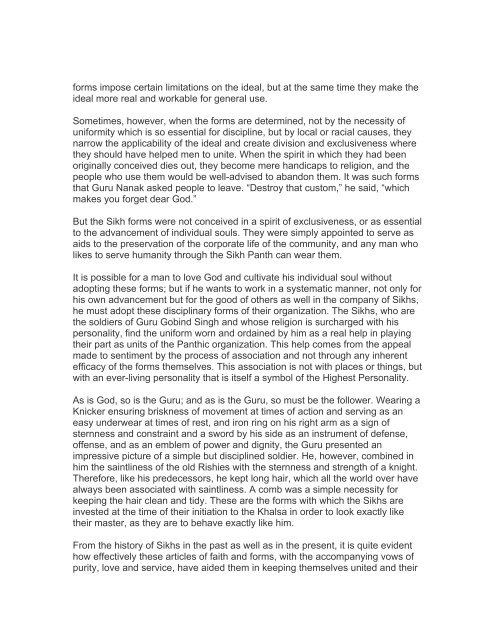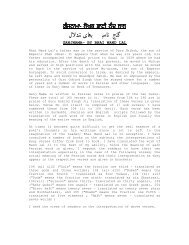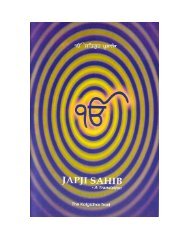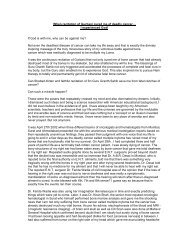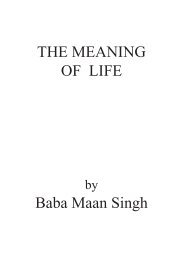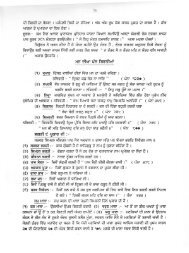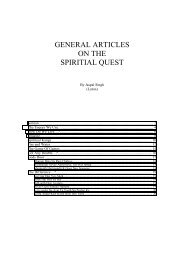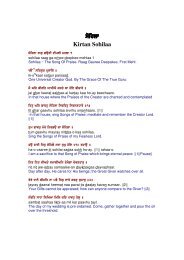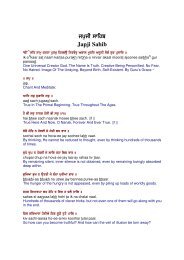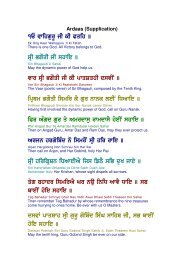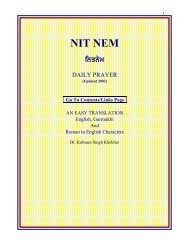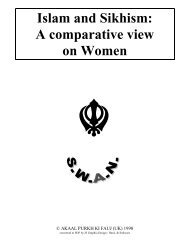OUTLINES OF SIKH DOCTRINES - Raj Karega Khalsa Network
OUTLINES OF SIKH DOCTRINES - Raj Karega Khalsa Network
OUTLINES OF SIKH DOCTRINES - Raj Karega Khalsa Network
Create successful ePaper yourself
Turn your PDF publications into a flip-book with our unique Google optimized e-Paper software.
forms impose certain limitations on the ideal, but at the same time they make theideal more real and workable for general use.Sometimes, however, when the forms are determined, not by the necessity ofuniformity which is so essential for discipline, but by local or racial causes, theynarrow the applicability of the ideal and create division and exclusiveness wherethey should have helped men to unite. When the spirit in which they had beenoriginally conceived dies out, they become mere handicaps to religion, and thepeople who use them would be well-advised to abandon them. It was such formsthat Guru Nanak asked people to leave. “Destroy that custom,” he said, “whichmakes you forget dear God.”But the Sikh forms were not conceived in a spirit of exclusiveness, or as essentialto the advancement of individual souls. They were simply appointed to serve asaids to the preservation of the corporate life of the community, and any man wholikes to serve humanity through the Sikh Panth can wear them.It is possible for a man to love God and cultivate his individual soul withoutadopting these forms; but if he wants to work in a systematic manner, not only forhis own advancement but for the good of others as well in the company of Sikhs,he must adopt these disciplinary forms of their organization. The Sikhs, who arethe soldiers of Guru Gobind Singh and whose religion is surcharged with hispersonality, find the uniform worn and ordained by him as a real help in playingtheir part as units of the Panthic organization. This help comes from the appealmade to sentiment by the process of association and not through any inherentefficacy of the forms themselves. This association is not with places or things, butwith an ever-living personality that is itself a symbol of the Highest Personality.As is God, so is the Guru; and as is the Guru, so must be the follower. Wearing aKnicker ensuring briskness of movement at times of action and serving as aneasy underwear at times of rest, and iron ring on his right arm as a sign ofsternness and constraint and a sword by his side as an instrument of defense,offense, and as an emblem of power and dignity, the Guru presented animpressive picture of a simple but disciplined soldier. He, however, combined inhim the saintliness of the old Rishies with the sternness and strength of a knight.Therefore, like his predecessors, he kept long hair, which all the world over havealways been associated with saintliness. A comb was a simple necessity forkeeping the hair clean and tidy. These are the forms with which the Sikhs areinvested at the time of their initiation to the <strong>Khalsa</strong> in order to look exactly liketheir master, as they are to behave exactly like him.From the history of Sikhs in the past as well as in the present, it is quite evidenthow effectively these articles of faith and forms, with the accompanying vows ofpurity, love and service, have aided them in keeping themselves united and their


